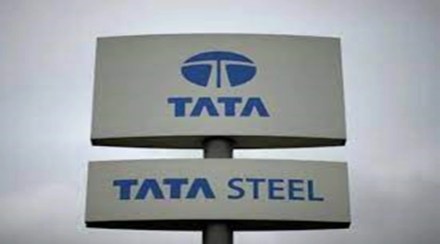Tata Steel will continue to invest Rs 10,000-13,000 crore a year going forward as it looks to double steel production to about 40 million tonne per annum (mtpa) in India by 2030. The steelmaker will also grow its downstream businesses such as tubes and wires in India. “Today we are producing about 20 mtpa of steel in India, and our ambition is to grow to 40 mtpa by the end of the decade.
We have the requisite sites — Kalinganagar and Himachal Pradesh and others — and as we grow the upstream, we will also grow our downstream businesses such as tubes, wires and ductile iron pipes, among others,” TV Narendran, CEO & MD, Tata Steel, said in an interaction.“Our current capex is in the range of Rs 10,000-13,000 crore a year, and going forward, we will continue to have that kind of a capex. Depending on projects, it would peak but at the same time we will keep an eye on debt levels. We are committed to keeping debt to Ebitda below 2, and we will generate enough cash flows to support us,” he added.
The firm also intends to increase the production of flats to 27 mtpa (from 16 mtpa), longs to 5 mtpa (from 13 mtpa) and of tubes to 2 mtpa from (1 mtpa), wires to 1 mtpa (from 0.45 mtpa) and ductile iron pipes to 1 mtpa (0.2 mtpa).Tata Steel is also aiming to bring down its net debt significantly from Rs 71,706 crore at present as capacity unwinds and steel margins improve.
On the UK government’s grant for energy transition, a decision would be taken in the next few months. “The UK government has come back recently with their counter proposal to our proposal. We are looking at it, we are also revisiting our proposal, and looking at other options in the UK, which would be more aligned to the support that they can give us rather than the original proposal.”The Tata Group company expects Q4 to be a better quarter for both Europe and India businesses compared with Q3, even though Europe will face challenging times in this quarter and next quarter.
The steel maker posted a consolidated net loss of Rs 2,223.84 crore in Q3.“I think the worst is behind us in India and Europe,” Narendran said. Tata Steel had posted a net profit of Rs 9,572.67 crore in Q3 of last fiscal.“There was also a non-cash adjustment because of the pension fund, or movement to insurance, which had almost a `2,000-crore impact. This is largely moving from the pension fund to the insurance company.
While the pension issue in some senses is a one-off, we have only transferred only 60% of the pension to the insurance and we will transfer the balance 40% in H1 of next year. It is non-cash, but an adjustment which has to be made,” he said.“While steel prices in Europe dropped by 160 pounds in Q3 compared with Q2, iron ore dropped by $20 and coking coal by $90. We had high value stocks in the system and we had to take a NRV (net realisable value) loss on that which was almost a 55-million-euro hit,” he said.
The steel prices, which are hovering at about Rs 60,000 per tonne, are expected to rise depending on various factors. “It will mirror what’s happening in the global markets. International prices went up by about $100, which is why Indian steel prices have also started going up. It also depends on coking coal prices, which have also risen by $340-350. So, if coking coal stays at $350, then steel prices will also rise,” he added.
